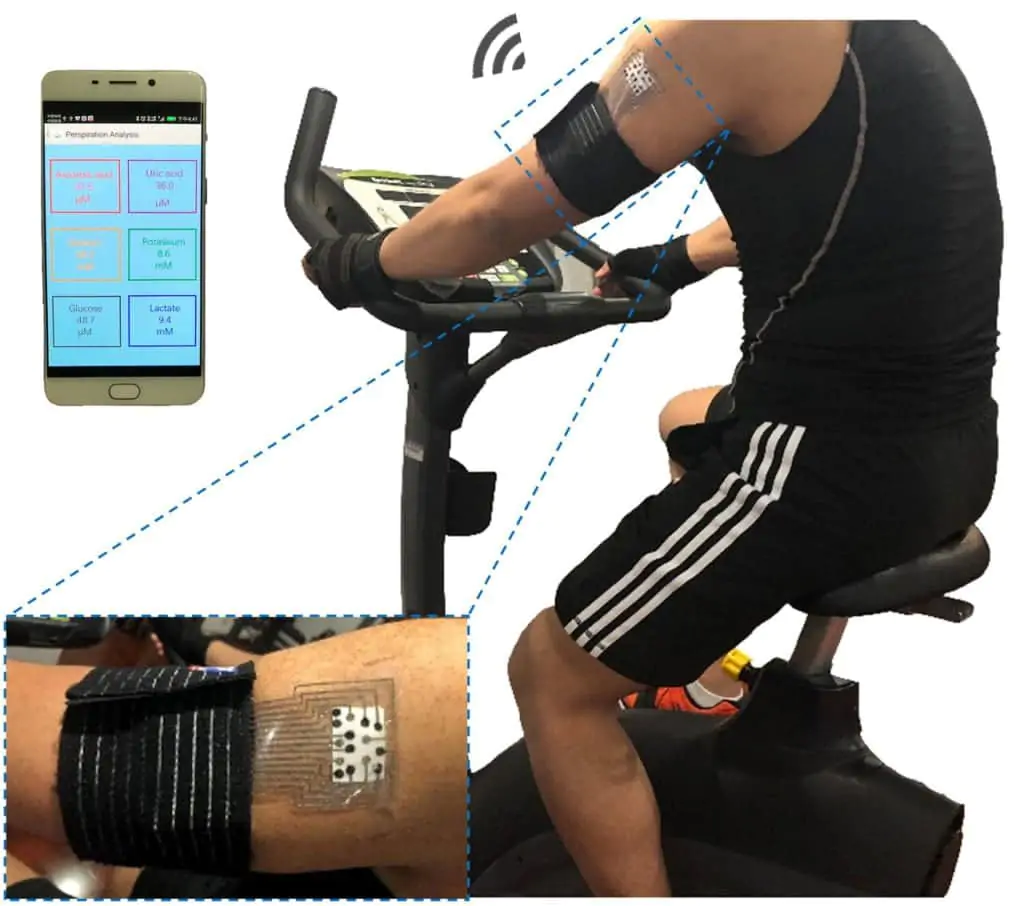A joint research team from the Chinese universities Tsinghua and Northwest University developed an electronic patch that measures 6 body biomarkers by analyzing sweat.
In the paper just released in the scientific journal Science Advances, the group described in detail the electronic patch approach and the (positive) results of the first tests.
I wearable biometric devices they have great advantages in spite of standard diagnostic techniques. Two above all? They are not invasive and can be used in real time.
Today, to be aware of our glucose or uric acid levels, we need a blood sample to be sent to a center that will study it and draw diagnostic conclusions.
This is why more and more research centers are exploring ways of making the process less invasive and closer to real time. Chinese researchers say the new patch solves both problems.
How is the electronic patch made?
It is, in short, a group of sensors inserted in a mixed silk and graphite fabric. The internal conductivity is guaranteed by the graphite "accelerated" by hydrogen atoms. The resulting electrochemical patch can be applied to the skin at arm level, is flexible and used to collect data from sweat:
- Glucose
- Ascorbic acid
- Lactic acid
- Potassium
- Sodium ions
- Uric acid levels.
Different substances, different methods
The team points out that the sensors for sweat analysis include electrochemical color measurement systems. Substances such as lactic acid and glucose are measured from the hydrogen peroxide produced in the enzymatic process. Potassium and sodium ions are measured with special sensors and so on.
The "road" tests
The researchers tested the patch by applying it to the arms of 5 healthy and adult volunteers, taken to pedal on a gym bike. The results of the analyzes made were sent directly to a smartphone. The team verified how the electronic patch can simultaneously monitor all parameters with a great accuracy rate.

For more info: Wenya He et al. Integrated textile sensor patch for real-time and multiplex sweat analysis, Science Advances (2019). DOI: 10.1126 / sciadv.aax0649



